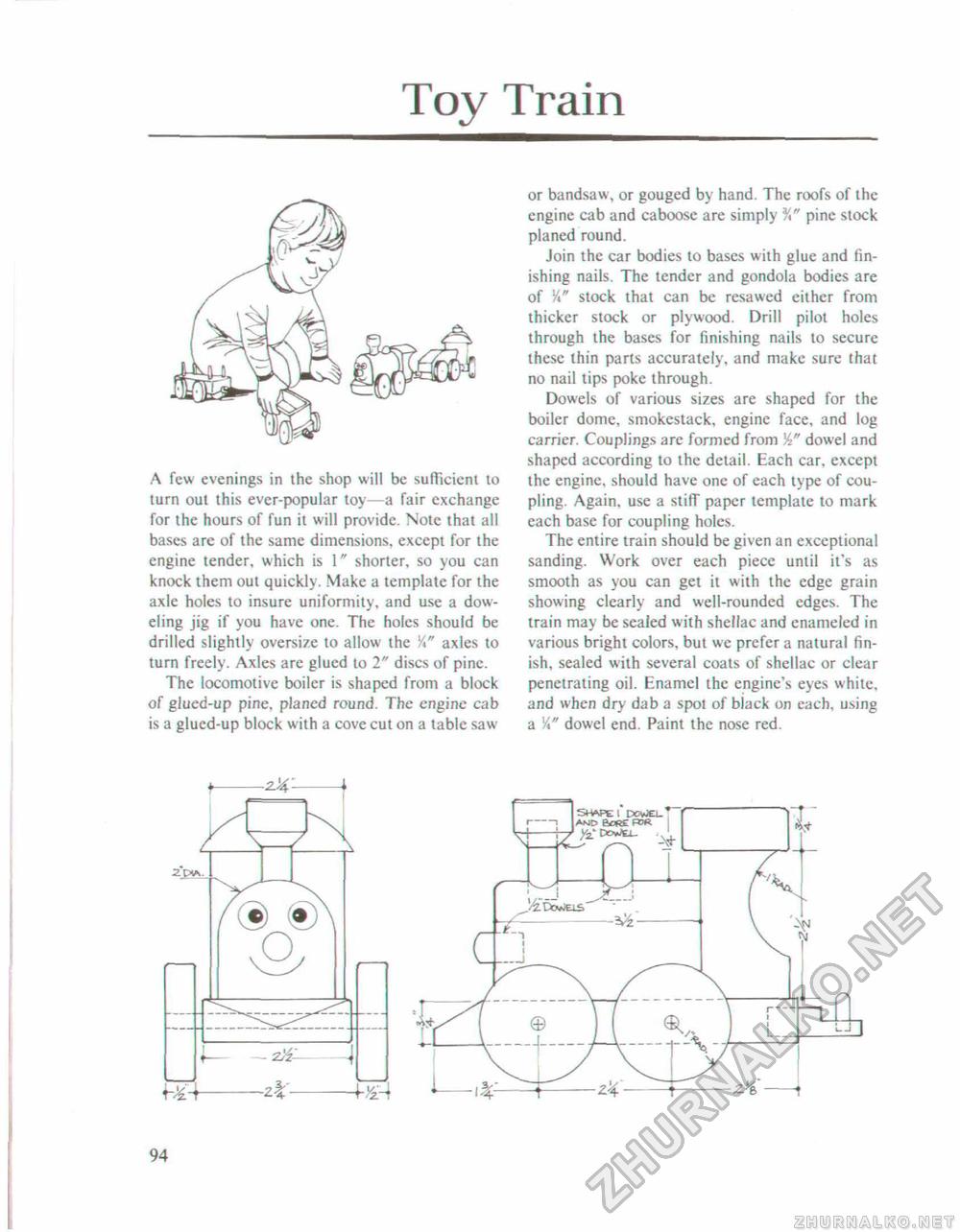Woodworker's Journal 101-Projects-for-Woodworkers, страница 101
Toy TrainA few evenings in the shop will be sufficient to turn out this ever-popular toy—a fair exchange for the hours of fun it will provide. Note that all bases are of the same dimensions, except for the engine lender, which is shorter, so you can knock them out quickly. Make a template for the axle holes to insure uniformity, and use a doweling jig if you have one. The holes should be drilled slightly oversize to allow the Y*" axles to turn freely. Axles are glued to 2" discs of pine. The locomotive boiler is shaped from a block of glued-up pine, planed round. The engine cab is a glued-up block with a cove cut on a table saw or bandsaw, or gouged by hand. The roofs of the engine cab and caboose are simply V pine stock planed round. Join the car bodies to bases with glue and finishing nails. The tender and gondola bodies are of K" stock that can be resawed either from thicker stock or plywood. Drill pilot holes through the bases for finishing nails to secure these thin parts accurately, and make sure that no nail tips poke through. Dowels of various sizes are shaped for the boiler dome, smokestack, engine face, and log carrier. Couplings are formed from dowel and shaped according to the detail. Each car, except the engine, should have one of each type of coupling. Again, use a stitT paper template to mark each base for coupling holes. The entire train should be given an exceptional sanding. Work over each piece until it's as smooth as you can get it with the edge grain showing clearly and well-rounded edges. The train may be sealed with shellac and enameled in various bright colors, but we prefer a natural finish, sealed with several coats of shellac or clear penetrating oil. Enamel the engine's eyes white, and when dry dab a spot of black on each, using a dowel end. Paint the nose red. 94 |








